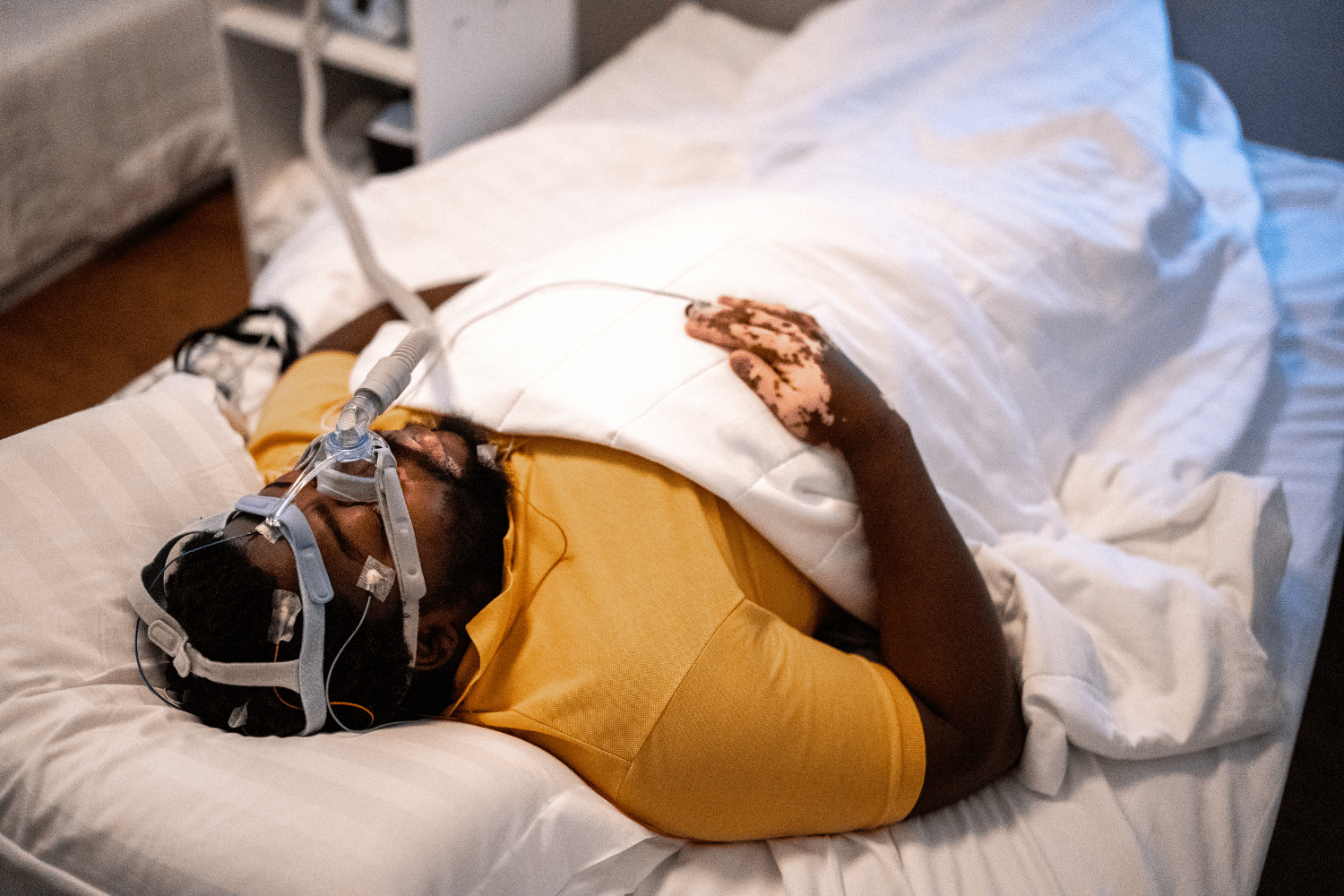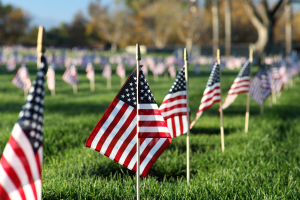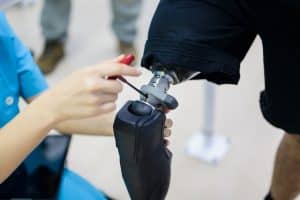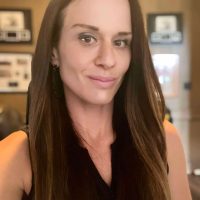A sleep study, formally known as a polysomnogram for VA claims, plays a vital role in helping veterans prove service-related conditions like sleep apnea for disability benefits. Many veterans struggle to connect their symptoms to service without solid medical proof, and that’s where a sleep test becomes essential. This diagnostic test provides objective evidence that the VA relies on when evaluating claims.
Understanding how to get a VA or private sleep study and what the results demonstrate can make all the difference in building a strong, successful case.
Table of Contents
What Is a Sleep Study and Why Is It Important for VA Claims?
A sleep study, also known as a polysomnography (PSG), is a medically supervised diagnostic test that monitors how your body functions while you sleep. It records brain waves, breathing patterns, blood oxygen levels, heart rate, muscle activity, and eye movements, providing a detailed, objective picture of your sleep quality.
A sleep test or polysomnogram helps to:
- Confirm a diagnosis of sleep apnea, narcolepsy, restless leg syndrome, chronic insomnia, or other sleep-related disorders.
- Determine the severity of the condition, which directly impacts your VA rating.
- Provide objective medical evidence, the kind the VA requires, to link your condition to military service and support treatment recommendations.
For veterans filing a VA disability claim for sleep apnea, a sleep study is often the first piece of medical evidence required to confirm the condition. Without documented test results, the VA usually denies claims because there’s no verified diagnosis.
Whether performed in a lab or through an at-home sleep test, this evaluation delivers hard data that supports your claim. For many veterans, undergoing a sleep study is the crucial step toward receiving proper treatment, improved quality of life, and fair compensation for service-connected sleep disorders.
VA vs. Private Sleep Studies
Veterans have two primary pathways to getting a sleep evaluation: through the VA system or by scheduling a private sleep study. Both routes can provide valid evidence for VA claims, but the experience, wait time, and cost can differ significantly.
VA Sleep Study
To obtain a sleep test from the VA, veterans must first visit their VA primary care provider and request a referral to a sleep clinic. If approved, the veteran may be scheduled for an in-lab sleep study at a VA medical center or a home sleep apnea test (HSAT) using portable equipment.
Results are reviewed by VA-certified sleep specialists and directly linked to disability claims or CPAP prescriptions.
Private Sleep Study
A private sleep study is arranged independently through a sleep clinic or physician referral outside the VA system. Patients may choose between at-home sleep testing (HST) or in-lab polysomnography. Private providers may offer faster access to testing and advanced equipment like continuous positive airway pressure (CPAP), especially for veterans experiencing long wait times at VA facilities.
Veterans can still submit private sleep study results with their claim, as long as they meet VA documentation standards.
| Category | VA Sleep Study | Private Sleep Study |
| Access | Requires VA referral approval | Direct scheduling via the clinic |
| Wait Time | 7 to 14 business days | Days to one week |
| Cost | Usually covered by VA | Paid out-of-pocket, insurance dependent |
| Location | VA hospital or home test | Private clinic or home test |
| Results Review | VA-certified specialists | Board-certified sleep doctors |
| Disability Claim Link | Directly tied to VA claims | Accepted if documentation is valid |
In-Lab Polysomnography vs. Home Tests
Sleep studies come in two main types: in-lab polysomnography and home sleep apnea tests (HSAT). Understanding the differences helps veterans choose the best option for their condition and VA claim strategy.
In-Lab Sleep Study (Polysomnography)
Conducted overnight in an accredited sleep lab or VA facility, polysomnography provides the most extensive data for diagnosing complex disorders, including central sleep apnea, narcolepsy, REM sleep behavior disorders, restless leg syndrome, and insomnia.
Technicians monitor the veteran in real-time, recording critical physiological data:
- Brain activity (EEG)
- Eye movement
- REM cycles
- Oxygen saturation
- Breathing interruptions
- Heart rhythm (EKG)
- Limb movement
- Snoring frequency and more
This detailed monitoring also helps doctors identify the type and severity of sleep disorders.
It may also include a CPAP titration, where a CPAP machine is introduced mid-study to evaluate its effectiveness. The American Academy of Sleep Medicine (AASM) recommends in-lab polysomnography when CSA or comorbid conditions (e.g., COPD, cardiovascular disease, hyperventilation) are suspected.
Home Sleep Apnea Test (HSAT)
A Home Sleep Apnea Test (HSAT) offers veterans a practical alternative to in-lab testing when diagnosing Obstructive Sleep Apnea (OSA), the most common form of sleep-disordered breathing.
More convenient and comfortable than in-lab testing, a home sleep study uses a portable device that tracks airflow, breathing effort, oxygen saturation, and heart rate, excluding brain waves or REM data. Veterans receive clear setup instructions and complete testing over 1 to 3 nights. While HSAT cannot detect neurological sleep disorders like central sleep apnea (CSA) or narcolepsy, it effectively identifies moderate to severe obstructive sleep apnea, supporting claims for CPAP therapy and VA disability benefits.
The VA may offer either type depending on your symptoms, location, and health status. While a home sleep apnea test is easier for those with mobility or distance barriers, some veterans may require the detailed data only available through in-lab testing for claim purposes.
How to Prepare for Your Sleep Study
Preparing for a sleep test is essential to ensure accurate results, especially when evaluating complex conditions like obstructive sleep apnea or REM sleep behavior disorder. Before undergoing the test, veterans may be asked to complete a sleep diary or questionnaire, documenting sleep patterns and daily habits for one to two weeks.
Follow these Best Practices:
- Avoid caffeine, nicotine, and alcohol after lunchtime (ideally before 24 hours).
- Do not nap the day of the study.
- Shower and wash your hair (skip lotion, oils, makeup, or hair products that can interfere with electrodes).
- Bring personal items like comfortable sleepwear, a change of clothes, any prescribed medications, a pillow or blanket, a phone charger, bedtime snacks, and reading material if you’re doing an in-lab study.
- Avoid taking any medications that may make you drowsy before coming to the sleep lab.
- Inform in advance if you’re allergic to adhesives or medical tape so they can provide alternatives.
- Follow any specific instructions given by your provider or the sleep clinic.
Adhering to these guidelines helps ensure that the sleep study sensors gather the medical evidence needed to move your VA claim forward and get the treatment you deserve.
What Happens During a Sleep Study?
Most sleep studies are conducted overnight, typically lasting for one night. If the study is scheduled in a VA sleep lab, veterans are expected to report to the location by 8:00 p.m. Upon arrival at the sleep lab, a Registered Polysomnographic Technologist (RPSGT) will guide you to a private, hotel-style room equipped with a camera and audio system for overnight monitoring. After reviewing your paperwork and explaining the procedure, the technician will take about 45 to 60 minutes setting you up for your study.
Setup and Equipment
During setup, several painless sensors are strategically placed on your body to record different activities:
- An electroencephalogram (EEG) leads with conductive paste are applied to the scalp to track brainwave activity.
- Facial electrodes detect eye movement and jaw tension.
- Chest and abdomen belts monitor breathing effort.
- A nasal cannula records airflow.
- A pulse oximeter checks oxygen saturation.
- Leg electrodes track muscle movement.
Electrodes or small metal discs are painlessly secured with hypoallergenic adhesives; if you have sensitivities, alternatives can be requested.
Calibration and Monitoring
Once connected, calibration begins. You’ll be asked to perform basic movements (blink, snore, breathe deeply) to ensure the signals are working. The monitoring is continuous throughout the night.
If breathing abnormalities like obstructive sleep apneas are detected, the technologist may initiate CPAP therapy, an air pressure device worn with a mask to keep airways open. This trial allows the sleep specialist to evaluate whether PAP therapy is appropriate and determine the optimal pressure settings.
Veterans often express concerns about falling asleep under observation, but even 6 hours of recorded sleep provides sufficient diagnostic data.
After the Sleep Study
The morning after your sleep study, a technician will gently wake you around 5:00 a.m. and begin removing the electrodes and monitoring equipment. This process usually takes about 20 minutes. Although the technician cannot discuss your results, your sleep data will be reviewed by a board-certified sleep specialist for detailed scoring and analysis. Veterans can expect their sleep test results within 7–14 business days, accessible through their referring provider or VA portal.
Based on the findings, your next steps may include a CPAP prescription, additional testing, or a referral for a sleep-related disability evaluation to support your ongoing health and well-being.
What the Sleep Study Results Must Include for VA Claims
To support a VA claim for sleep apnea, the study results must confirm a clinical diagnosis of obstructive, central, or mixed sleep apnea and provide details about the severity of the condition. The sleep study (usually a polysomnography) should document episodes of apnea (breathing pauses) or hypopnea (shallow breathing) during sleep, measured by Apnea-Hypopnea Index (AHI) scores.
AHI Severity Scale:
Based on the American Academy of Sleep Medicine (AASM) clinical guidelines, the severity of obstructive sleep apnea is classified using the AHI scores as follows:
- 5–15: Mild OSA
- 15–30: Moderate OSA
- 30+: Severe OSA
Additionally, the report should display oxygen desaturation levels, sleep efficiency, and indicate whether the use of a continuous positive airway pressure (CPAP) machine is medically necessary.
Example: A veteran completes an in-lab study that reveals an AHI of 32 and oxygen levels dropping below 85%. The provider recommends CPAP therapy. This result not only confirms severe OSA, but it also supports a potential 50% VA disability rating under current DC 6847, assuming service connection is established.
The VA requires this objective medical evidence to establish a current disability, which, combined with service records or nexus opinions, links the condition to military service.
Sample Polysomnogram Report
Here’s an excerpt from a veteran’s sleep study report:
History: The patient is a 52-year-old male who was referred for evaluation of possible sleep apnea with excessive sleepiness. Medical history: GERD, depression. Medications: Zoloft and Prilosec.
Procedure / Description:
This routine overnight polysomnogram was performed using standard diagnostic protocol (6 channels of EEG, 2 EOG, chin EMG, bilateral anterior tibialis EMG, nasal/oral thermistor, nasal pressure transducer, chest and abdominal wall movements, EKG, and pulse oximetry).
- Total Recording Time: 424.0 minutes
- Total Sleep Time: 373.0 minutes
- Sleep Efficiency: 88.0% (44.0 minutes of wake after sleep onset)
- Sleep Latency (from Lights Off): 7.0 minutes
- REM Latency (from sleep onset): 203.0 minutes
- Sleep Architecture (as % of TST):
- Arousal Index: 51.5 arousals/hour (320 total arousals)
Respiratory Findings:
- Apnea + Hypopnea Events (Total): 434
- Apnea-Hypopnea Index (AHI): 69.8 events/hour
- REM-related AHI: 66.9/hr
- NREM AHI: 70.2/hr
- Avg Event Duration: 35.7 seconds
- Max Event Duration: 112.0 seconds
- Lowest O₂ Saturation – during respiratory events: 57%
- Baseline O₂ (Wakefulness): 90%
- Average O₂ in NREM / REM: 88% (NREM), 85% (REM)
- Time O₂ < 90%: 223.1 minutes
- Time O₂ < 80%: 46.0 minutes
Cardiac / Limb Movement Findings:
- No significant cardiac arrhythmias observed.
- Periodic limb movement monitoring: no clinically significant periodic limb movements (Index = 0.0)
Impression & Recommendations (excerpt):
This sleep study demonstrates significant obstructive sleep apnea (overall AHI ~ 69.8) with frequent oxygen desaturations.
Recommendations include CPAP titration due to severity and weight loss for a patient with BMI ~ 31.9.
Source: Sleep Medical Center – Sample Standard PSG Diagnostic Report (PDF)
Does the VA Pay for Sleep Studies?
Yes, many veterans can have their sleep studies fully covered by the Department of Veterans Affairs (VA), depending on their disability rating and referral status.
If a veteran has a combined disability rating of 50% or higher and is in Priority Group 1–5, the VA will cover the entire cost of a sleep study ordered by a VA healthcare provider. Veterans rated below 50% may be responsible for a small copay. Coverage rules can change annually; always verify current rates in the official VA Health Care Copay Rates.
Private sleep studies, unless referred through the VA Community Care program, are often paid out-of-pocket. The Sleep Foundation reveals the cost of a sleep study can range from $150 to over $10,000, with the average cost being $3,000.
Understanding the VA Sleep Apnea Rating Criteria
The VA rates sleep apnea under 38 CFR § 4.97, Schedule of ratings—respiratory system, Diagnostic Code 6847, with disability percentages ranging from 0% to 100%, depending on severity and required treatment.
Here’s a breakdown of what each rating typically means:
- 0% Rating – Diagnosed sleep-disordered breathing with no symptoms that require treatment.
- 30% Rating – Persistent daytime sleepiness (hypersomnolence) or fatigue, but no need for CPAP or other breathing assistance.
- 50% Rating – Requires the use of a continuous airway pressure (CPAP) machine or similar therapy.
- 100% Rating – Chronic respiratory failure, or sleep apnea with related serious conditions like cor pulmonale or needing tracheostomy.
To receive a 50% or higher rating, the sleep study must not only confirm the diagnosis but also indicate the medical necessity for CPAP. This is why both study reports and treatment documentation (such as CPAP prescriptions) are vital in a claim.
Example: A veteran with an AHI of 36 and daily CPAP use could qualify for a 50% rating. If the condition worsens significantly and leads to respiratory complications, the veteran may be reevaluated for a higher rating.
Important update:
The VA has proposed revisions to 38 CFR § 4.97 (Respiratory Conditions) that could change how sleep apnea is rated, potentially emphasizing treatment effectiveness rather than device use. These proposals are not yet finalized. Veterans are encouraged to file their claims or appeals before the effective date if proposed changes are approved.
See VA Sleep Apnea Ratings: 2025 Proposed Changes (and Current Rules).
Linking Sleep Apnea to Service: Direct and Secondary VA Connections
For VA disability compensation, having a confirmed diagnosis of obstructive sleep apnea (OSA) with a sleep study is just one piece of the puzzle. To be awarded service-connected benefits, the VA requires that three criteria be clearly met:
- A current, medically confirmed diagnosis (usually through a sleep study)
- An in-service event, injury, illness, or exposure (such as exposure to burn pits, combat stress, or irregular sleep schedules)
- A nexus, or medical link, between the diagnosis and the veteran’s service
This link or nexus can be either direct, meaning the condition started during service, or secondary, where sleep apnea develops as a result of another service-connected disability.
Direct Connection to Military Service
A direct connection means that the symptoms or onset of sleep apnea began during a veteran’s time in uniform or can be medically linked to specific military circumstances. Examples might include sleep disturbances documented in service treatment records (STRs) or medical evidence linking respiratory or sinus issues to deployment exposures like burn pits, dust, or chemical fumes.
When Sleep Apnea Develops from Other Conditions
Many veterans develop OSA as a secondary condition due to other service-connected disabilities, including:
- Post-Traumatic Stress Disorder (PTSD)
- Traumatic Brain Injury (TBI)
- Depression or anxiety
- Chronic pain or orthopedic injuries
- Weight gain from prescribed medications for mental health or pain management
To pursue a secondary service connection, veterans must obtain a medical opinion stating that their OSA is “at least as likely as not” caused or aggravated by an existing service-connected condition. Without a well-written nexus letter from a qualified medical professional who understands VA standards, the VA may attribute OSA to factors unrelated to service, like age, weight, or lifestyle.
When properly linked, secondary conditions to sleep apnea can increase a veteran’s combined VA disability rating and monthly compensation, ensuring full benefits for all service-related conditions.
What Does a Sleep Study Prove to the VA?
For veterans seeking disability benefits, the VA mandates a sleep study to ensure claims for sleep-related disorders are supported by objective medical evidence and not just self-reported symptoms. This ensures accurate diagnosis, fair ratings, and credible service connections.
A Diagnosable Sleep Disorder
The VA does not accept personal reports like snoring or fatigue alone. A formal sleep study objectively measures breathing interruptions called apnea or hypopnea events per hour (AHI). For instance, a veteran showing 20 events per hour would meet the “moderate” range, qualifying for service connection documentation.
These thresholds directly influence VA disability ratings and differentiate obstructive sleep apnea (OSA), central sleep apnea (CSA), or mixed types for accurate compensation and treatment planning.
Establishing the “Nexus” to Service
A sleep study helps establish the nexus to service by providing objective medical proof that a veteran’s sleep disorder exists and aligns with symptoms or conditions that began during service. When paired with service records or medical opinions linking active duty experiences to the disorder, the sleep study confirms continuity and causation.
For instance, a nexus letter from a qualified medical provider experienced in VA disability claims can explain how the obstructive sleep apnea (OSA) is “at least as likely as not” caused or aggravated by the burn pit exposure during the veteran’s military service.
This quantifiable data bridges the gap between a veteran’s diagnosis and their in-service events or exposures.
Ruling Out Non-Service Causes
Polysomnography results help rule out non-military causes of sleep disorders. Such objective data prevents unfair claim denials by the VA based on assumptions.
For example, a veteran with no history of weight gain or substance use but diagnosed with chronic sinus inflammation from desert deployments could show through testing that their airway obstruction is linked to those service-related sinus and respiratory problems, not lifestyle causes.
Claims for Secondary Service Connection
Polysomnography results are essential for veterans claiming sleep apnea secondary to PTSD, TBI, depression, or certain medications. For example, a sleep study may show that a veteran taking prescribed anxiety medication experiences repeated airway collapse during sleep. This helps confirm a secondary relationship between the medication and the onset of obstructive sleep apnea.
Treatment Needs and Functional Impact
Beyond confirming a diagnosis, a sleep study provides essential information about treatment requirements and the disorder’s effect on daily functioning.
Veterans diagnosed with moderate to severe OSA who require CPAP therapy typically meet the criteria for at least a 50% VA disability rating, ensuring they receive proper compensation and ongoing medical support.
How to Schedule a Sleep Study (VA or Private)
- Step 1: Request your VA primary care provider to obtain a Sleep Medicine referral.
- Step 2: Wait for authorization from the VA or your insurance provider.
- Step 3: Once approved, the VA or your insurer will schedule the sleep test either in a VA facility, a VA-contracted community clinic, or via a home test.
- Step 4: Confirm your appointment details, such as date, time, location, and instructions.
- Step 5: Follow the instructions provided for your test and attend as scheduled to complete your evaluation.
You can reach the VA Health Benefits Hotline at 1-877-222-8387 or the VA Community Care Contact Center at 1-877-881-7618 for assistance with scheduling a sleep study.
Using Sleep Test Results to Qualify for Advanced Treatments
Once a sleep study confirms obstructive sleep apnea (OSA), the next step is typically treatment, and this is where the VA rating criteria become important.
Under VA regulations, veterans who are diagnosed with OSA and prescribed a Continuous Positive Airway Pressure (CPAP) machine are generally eligible for a 50% disability rating. This rating reflects that CPAP is considered a medically necessary intervention for ongoing, chronic sleep apnea.
- If CPAP is not tolerated, veterans may be evaluated for alternatives such as Bi-level Positive Airway Pressure (BiPAP) therapy or the Inspire® device, an implanted nerve stimulator that helps keep the airway open during sleep. Inspire® is only approved for certain veterans with moderate to severe OSA who meet strict eligibility criteria, including a BMI ≤ 32–35.
- The VA is now offering a new procedure, the Diaphragm (phrenic nerve) Stimulator, an implanted device that helps regulate breathing by sending signals to the diaphragm for managing central sleep apnea.
Remember that treatment alone doesn’t guarantee VA benefits. Veterans must still establish a service connection through a nexus opinion. Together, the sleep study diagnosis and documented treatment create powerful evidence for a higher, sustained VA disability rating.
Consult with a sleep specialist or cardiologist on the right treatment and ensure proper documentation, effective management, and stronger eligibility for service-connected compensation.
Final Thoughts
For veterans pursuing VA disability benefits, completing a sleep study is one of the most important steps toward recognition and fair compensation. It transforms symptoms into undeniable medical evidence that supports your claim. Don’t overlook the value of pairing your results with a well-written medical nexus linking the condition to service. Take charge of your health, follow through with testing and treatment, and ensure solid documentation to secure the outcome you deserve.
FAQs
How does the VA conduct a sleep study?
The VA conducts sleep studies either in a VA sleep lab (polysomnography) or at home using portable equipment, monitoring brain waves, breathing, oxygen, and other sleep metrics to diagnose disorders like sleep apnea.
How long does a sleep study take at the VA?
A VA sleep study typically lasts one night, with setup taking about an hour and monitoring continuing overnight for around six hours of recorded sleep. Some veterans may require follow-up or repeat testing.
What is the VA rating for sleep apnea?
The VA rates sleep apnea under Diagnostic Code 6847, assigning 0%, 30%, 50%, and 100%, depending on the severity and treatment needs.
How to prepare for a VA sleep study?
To prepare, avoid caffeine, alcohol, and naps before the test, arrive clean without lotions or hair products, bring comfortable sleepwear and personal items, and follow all clinic instructions.
How long does it take to get sleep test results from the VA?
VA sleep study results are usually available within 7 to 14 business days through your provider or the VA health portal.
Will the VA accept an at-home sleep study?
Yes, the VA accepts at-home sleep studies (HSAT) if properly documented and performed under VA or VA-authorized supervision.
What happens during a VA sleep test?
During a VA sleep study, painless sensors are attached to monitor sleep patterns overnight, and if apnea is detected, CPAP therapy may be tested to determine effective treatment.
Also read: The Role of a Nexus Letter for Obstructive Sleep Apnea (OSA) Claims
At Prestige Veteran Medical Consulting, a veteran-owned company, we specialize in Independent Medical Opinions (IMOs) known as Nexus letters.
Our purpose is to empower YOU, the veteran, to take charge of your medical evidence and provide you with valuable educational tools and research to guide you on your journey.
Understanding the unique challenges veterans face, our commitment lies in delivering exceptional service and support.
Leveraging an extensive network of licensed independent medical professionals, all well-versed in the medical professional aspects of the VA claims process, we review the necessary medical evidence to incorporate in our reports related to your VA Disability Claim.
Prestige Veteran Medical Consulting is not a law firm, accredited claims agent, or affiliated with the Veterans Administration or Veterans Services Organizations. However, we are happy to discuss your case with your accredited VA legal professional.













